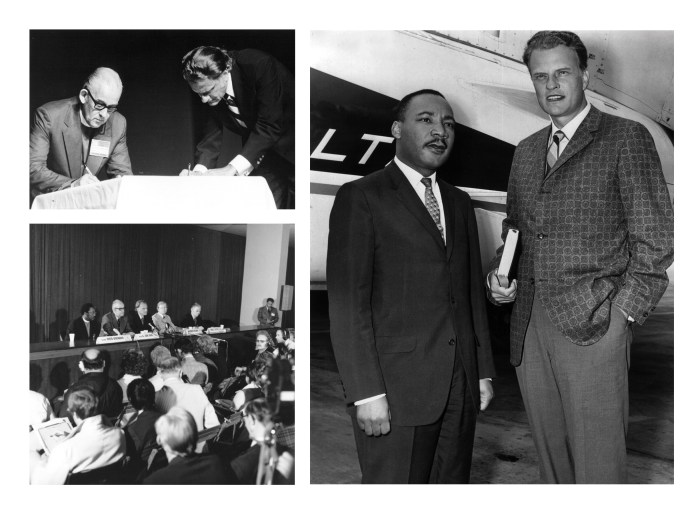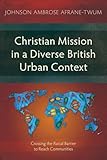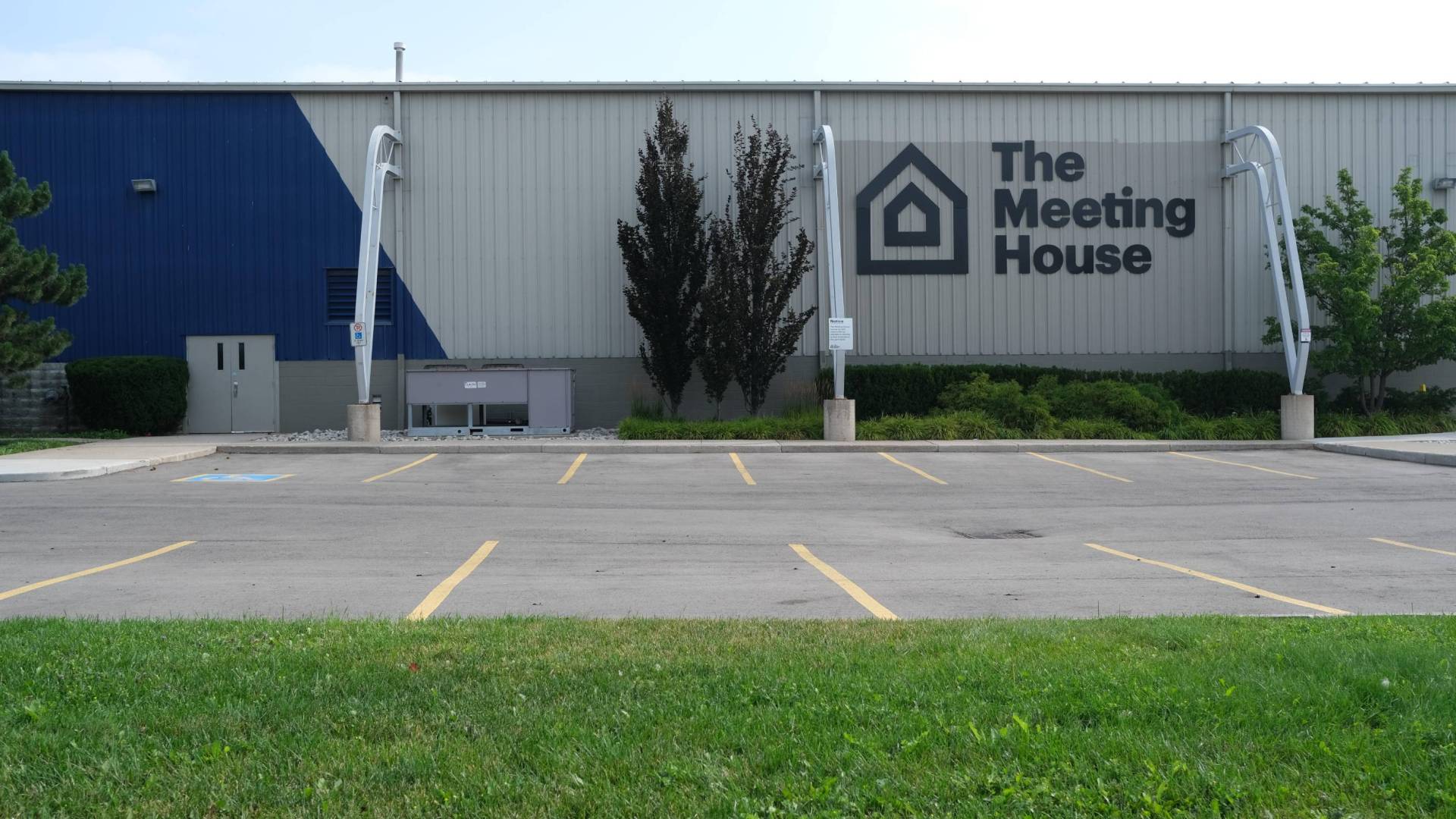The congregation that gathers at Alliance Church doesn’t need to be told to greet their neighbors. Dotted with West Texas flair—cowboy boots, shiny belt buckles, and big hair—they come with hands outstretched.
Together, they sing out about God’s healing and rescue, “Ahora, soy ciudadano del cielo,” proclaiming a united identity as citizens of heaven.
America’s Hispanic evangelical churches, which have been growing with converts from Catholicism as well as new immigrants, are known for this familia-style fellowship. Their pastors tend to be bivocational, busy enough that they focus more on the needs of their congregations than the culture wars clashing outside.
“Five to ten years ago, most Hispanic Baptist congregations … and even Hispanic Assemblies of God churches, their focus was on the gospel,” said Jesse Rincones, lead pastor of Alliance. Political conversations “never really made it to our pulpits.”
But politics have increasingly emerged in Hispanic pews in the years since Donald Trump’s presidency. Trump has gained more Hispanic support with each run at the White House—performing better among the demographic than any Republican candidate in decades—and Hispanic evangelicals have been a key target in his faith outreach.
Rincones, who also leads the Hispanic Baptist Convention of Texas, said Republicans have “probably seen some success in doing that in [the white evangelical] space and are now expanding” to Hispanic communities.

Hispanic voters are the group to watch this election year. Their ecclesiastical and political participation will shape both the pews and the ballot box. Though both political parties are going after the demographic with new levels of outreach, winning them will be difficult.
Given the diversity within their congregations, Hispanic evangelicals attest to how hard it is to capture a group that spans starkly different positions across generations, backgrounds, and theological beliefs.
Gabriel Salguero, pastor of The Gathering Place, an Assemblies of God church in Orlando, Florida, said Hispanic evangelicals are “the quintessential swing voters.”
Members of Salguero’s congregation come from both sides of the political aisle, and he chooses to identify as an Independent rather than back either major party.
From his Gen Z and millennial congregants, he frequently hears of weariness with polarizing and hyperpartisan party leadership.
“[There’s] the assumption of Because we’re evangelical, we’re Republicans; because we’re Latino, we’re Democrats,” said Salguero, who also serves as president of the National Latino Evangelical Coalition. “Assuming that they can take us for granted—either party—I think that’s a mistake.”
At Alliance Church, one red “Make America Great Again” (MAGA) cap began to turn up regularly among the cowboy hats in the crowd.
“Politics … it brings some division,” said David Ramirez, a Spanish ministries pastor at Alliance who moved to the United States from Mexico City 16 years ago for college. He’s had congregants tell him to encourage people to vote for Trump “because he’s the one who has a Christian agenda.”
Ramirez understands the appeal but doesn’t see it as his place to make an endorsement. Instead, he wants to encourage a church that is respectful and loving across political stances.
The man with the MAGA hat, a Texan of Mexican descent, told the pastor that he met people at church who changed his views. Ramirez read between the lines: “I know that he was talking about immigrants.
“He told me, ‘Those people have become some of my best friends, some of the people that I love the most,’” Ramirez said. “And he’s a Trump supporter, 100 percent.”

One in seven eligible voters in the US today are Hispanic, the country’s largest minority demographic. Hispanic Americans have traditionally voted for Democrats, but the party’s hold is slipping. Hispanic voters went out for Barack Obama by a majority of 71 percent in 2012, Hillary Clinton by 66 percent in 2016, and Joe Biden by 59 percent last election.
Meanwhile, Trump increased his support among Hispanic voters by 10 percentage points—from 28 percent in 2016 to 38 percent in 2020—narrowing the margins in Democratic strongholds like Miami and flipping a majority Hispanic district on the Texas border.
His campaign appointed Hispanic pastors for explicit faith outreach, meeting with them on the campaign trail and tapping them to pray at rallies. Trump’s pledges to defend Christianity, protect religious liberty, and advance the pro-life cause have resonated with Hispanics who share those values alongside fellow evangelicals.
The appeal is making a difference: Since Trump came onto the political scene in 2016, there’s been on average a 4-point increase in the percentage of Hispanic Protestants siding with Republicans and a nearly 6-point decrease in Hispanic Protestants siding with Democrats, according to an analysis of Pew Research Center survey data. The shifts in both directions are twice as big among Hispanic Protestant voters than Hispanic voters overall.
Charismatic circles are where Hispanics have really caught on to Trump’s message, joining a chorus of worshipers, prophets, and celebrity pastors who see Trump as God’s chosen. Over half of Hispanic Protestants identify as either Pentecostal or charismatic and believe in spiritual gifts from divine healing to speaking in tongues.
“So many Hispanic Christians—Protestants—are formally or informally Pentecostal,” said Robert Chao Romero, a pastor and a professor at the University of California, Los Angeles.
When individuals, particularly in immigrant communities, experience struggle, “Jesus meets us so powerfully,” Romero explained. He told the story of one of his cousins, who had heart problems, going to the doctor and “they’re praying, praying—and the next day the doctor goes, ‘You have no heart problems.’”
“We all have stories like that,” Romero said. “We experience God in those active ways.”
This awareness of God at work in the world and sensitivity to the spiritual realm can put higher stakes on political engagement. Praying for certain candidates and policies, getting involved in activism, and expecting miracles and political revival become Christian responsibilities imbued with calling.

Nilsa Alvarez said her call to politics first sounded like a cascade of “really tiny, tiny little screams” echoing in her ears as she prayed on a park bench. She felt God tell her to advocate for victims of abortion. Later, she said, she saw a vision of Jesus taking her in and out of meetings in the White House. In the vision, she told Jesus she didn’t belong there, but she said Jesus encouraged her to be in the room.
“I could never identify myself with any of the prophets that ministered at my church, because they are prophets that God has anointed to build up the body. But there are those that are called to build up the government,” Alvarez said. She first got involved in politics ahead of the 2016 race, inspired to elect a Republican who could appoint Supreme Court justices to overturn Roe v. Wade.
Alvarez was a music minister at a Hispanic church in the Miami suburbs at the time. She soon met the faith director for the Florida Republican Party and began volunteering at voter registration drives at churches.
Her next job was regional faith director for the GOP. She said she knew inside her spirit that’s where her prophetic gift was meant to be used. When Trump took office, she found herself, along with other faith leaders, “going in and out of the White House. Like I saw.”
Alvarez, who now serves as the Hispanic director for the Faith & Freedom Coalition, described her political activism as part of a larger movement “to shift the culture in God’s direction” by bringing Christian influence into the government. Among charismatics, the concept of Christians being called to influence various realms of society is called the Seven Mountain Mandate.
The movement began decades ago as a way to spur evangelical engagement in rather than retreat from seven areas: media, government, education, economy, family, religion, and entertainment.
These days, it’s most commonly cited by charismatic and apostolic leaders calling for a Christian takeover in these spaces—dominionism—in preparation for Christ’s second coming. Self-declared prophets have incorporated Trump into Seven Mountain ideology, proclaiming that God chose him to use his influence to reclaim areas of culture.
“In a very short period of time, I think because there were some really high-profile, charismatic celebrity Trump supporters who were very open with their celebration of the Seven Mountain Mandate—an idea that had been pretty obscure in charismatic circles—all of a sudden it was just everywhere,” said Leah Payne, a historian of religion at Portland Seminary.
Not all charismatic- or Pentecostal-leaning Hispanic evangelicals lean to the right, Payne pointed out, though some prominent ones do. Honduran American televangelist Guillermo Maldonado rallied for Trump at his apostolic Miami megachurch, El Rey Jesús. It was the kickoff to the president’s “Evangelicals for Trump” campaign in 2020.
“We ask you, Father, that he could be the Cyrus to bring reformation, to bring change into this nation,” Maldonado prayed as Trump’s faith advisers laid hands on the president. “I declare, God, that you use him to change the spiritual atmosphere of this nation.”
Beyond the theological underpinnings drawing Hispanic charismatics to the former president, their national backgrounds can also play a significant factor.
Hispanic Americans who fled places with oppressive leftist or authoritarian governments—think Venezuela, Nicaragua, or Cuba—are inclined to oppose what they see as more socialist-leaning positions from Democrats. They’re also more likely to embrace churches and pastors that are outspoken on politics.
“Because of the countries they come from, they’re like, Well, we don’t want to become socialist,” Romero said. “There’s that natural more Republican-leaning thing happening in that context.”
But the trends among Hispanics are far more nuanced than a rightward shift seen in turnout for Trump.
Alexia Salvatierra, academic dean of Fuller Theological Seminary’s Spanish-language program, Centro Latino, and associate professor of mission and global transformation, points to the younger generations of Hispanic Christians that are growing the church.
Around a third of worshipers in Hispanic Protestant congregations in the US are under 30, surveys show, and their leaders also skew younger. Like others in Gen Z, young Hispanic believers are more interested than their older, conservative-leaning Christian relatives in addressing societal ills—advocating for criminal justice, education access, domestic violence solutions, or immigration reform.
When Salvatierra talks about justice and mercy in theology classes at Centro Latino, more than once she’s seen Hispanic students start crying “because I’ve finally given them permission to do what they want to do,” she said.
Hispanics represent the biggest immigrant group in America. Whether they’ve been here for generations or are new arrivals, most believe the immigration system needs to change. Hispanic voters favor extending legal status to “Dreamers,” undocumented immigrants brought to the US as children, and immigrants who have lived in the US a long time, but many also see the need to increase border security.
The Libre Institute, a nonprofit focused on Latinos in the US, found in a survey of Hispanic voters that two-thirds agreed the country should do what’s necessary to “stop the flow of illegal immigration” at the southern border.
For immigrants who have their citizenship, the tough rhetoric about immigration crackdowns from Trump’s camp may not faze them for another practical reason.
“Mass deportations … it’s a really difficult thing to pull off,” said Jose Mallea, a presidential appointee to the George W. Bush White House who also advised Jeb Bush on Hispanic outreach during his 2016 presidential campaign. He said voters might be thinking, “I’m going to vote for [Trump] anyway because I believe in everything else.”
Evangelicals have grown more hawkish on illegal immigration in the past two decades. They have also advocated for immigration reform and asylum for migrants fleeing violence and persecution in their home countries while expanding ministries to assist new arrivals. Most Hispanic churches in the US have programs to help recent immigrants in some way, such as providing information, offering rides, or hosting English classes.
This year, Trump has made quelling illegal immigration a key component of his campaign, and polling showing rising public concern on the issue has left the Biden camp scrambling to address it as well. At the launch of the “Latinos con Biden-Harris” initiative in Phoenix, Biden told a crowd that “you’re the reason” he beat Trump and “I need you badly.”
Samuel Rodriguez, who leads the National Hispanic Christian Leadership Conference, told CT that he believes the Republican Party needs a mindset shift when it comes to immigration. “The Republican Party needs to look at immigrants as a blessing,” he said. “And they need to be explicit and say legal immigration is a blessing.”
Rodriguez condemned racist rhetoric about immigrants from Trump’s camp but said priorities like economic safety, parental rights in education, and religious liberty will drive Hispanic Americans toward the GOP in greater numbers.
Rodriguez believes faith leaders, both liberal and conservative, will not shy away from political conversations this election cycle.
“My prediction is you will see pastors this year more than ever before in American history encouraging their members to vote,” said Rodriguez, who’s also the pastor of New Season, a Pentecostal megachurch based in Sacramento, California.
The Libre Initiative (sister organization to the Libre Institute), a libertarian-leaning group funded by the Koch brothers, focuses on outreach to Hispanic voters and centers its message on immigration reform, the economy, education, and health care. It’s now headed by Mallea, who brings his background in politics as well as his experience as a business owner in Miami.
For two decades, he’s fielded the same question again and again: “If Hispanic voters place so much importance on faith and family, why aren’t more of them joining the GOP?” Mallea’s response to Republicans: “Because you haven’t even tried to go into the community.”
He believes recent outreach efforts are finally bearing fruit. “This is going to be a historic year,” he predicted.
Libre steers clear of culture-war debates over issues like abortion and religious freedom and takes a pragmatic, pocket-book-based approach. At its Phoenix office, a cheeky sign on one wall reads, “Bidenomics is bad economics” in all caps.
After a stint working for the Republican Party, Monet Bacs ended up turned off by partisan politics but still wanted to find ways to fill the gap in outreach to her community.
“Honestly, just by the grace of God, I was working with a friend and she invited me to a Libre event,” Bacs, a 20-something Christian whose business casual attire would be at home on Capitol Hill, told me.
“I was very quickly blown away,” she said. Instead of the “cold, normal political scene,” volunteers traded hugs. There was warmth.
As the Arizona strategic director for Libre, Bacs coordinates English classes, grocery handouts, and networking events for entrepreneurs. “It gives me a lot of purpose every morning. When I wake up, I get to go to work,” she said. “I do feel like I’m meant to be here. It’s where God led me.”
Her father, who came to the United States from Guatemala on a foreign exchange program as a teenager, impressed upon Bacs that civic participation and political engagement couldn’t be taken for granted.
“In Guatemala, it wasn’t even an option to really think about those conversations,” she said. “The most civic thing you could do was just vote, and that was super exciting to him. So when he came to America, it was a complete mental overhaul, which is why he absolutely fell in love with this country. So that’s my passion, sharing that with other people.”
Bacs believes that Hispanic communities like hers are the sleeping giant in politics. “At the end of the day, everyone in this chapter, we all know how important it is to get our community involved. We’re constantly being left out of the conversation.”
Earlier this year, Libre took a group of Hispanic high school students on a tour of the state capitol in Phoenix. There, Republican representative Michele Peña—who flipped a Democratic-leaning district in an upset in 2022—spoke to the group, switching between Spanish and English. She explained, Schoolhouse Rock! style, how bills become laws and admonished them to stay in school.
Bacs believes having a focus on policy and practical how-tos resonates with voters who care more about opportunities and cost of living than political gesturing.
Latinos have drastically higher rates of starting and owning new businesses than any other racial or ethnic group in the US. Mallea said this entrepreneurial spirit, along with the perception that Republicans are stronger on economic issues, will win some Hispanic voters over time. As the Democratic Party “started to shift away from some of those values … all of a sudden, Hispanics are open to someone else.”
Yahaira Felix, Libre’s grassroots engagement director, was shocked after getting her green card to learn how “easy it is to open a business here in the United States.”
Felix, who worked in engineering in Mexico, started a cleaning company in 2022 after minimum-wage jobs rejected her for being overqualified. A few months later, Libre recruited her.
“The freedom that you have in your country is so different than the freedom that you have here in this country,” she said. “When you really learn those things, really, you want to keep it.”
As November draws near, disagreements about the best way to preserve those freedoms will lead to some bitter divisions, leaving churches wrestling with how to respond. But the friction may result in less wear in the social fabric of churches with strong connections among their members—like Alliance Church.

Last year Jorge Vazquez, the administrative pastor of Alliance and the Texas director of the Conexión Pastors Initiative, led a dozen church members in a Bible study of politics and the Cross after some expressed interest in leaning into, rather than away from, political conversations.
For eight weeks they discussed typical election-year topics—poverty and economics, abortion, race relations, and same-sex marriage. “There were some healthy disagreements,” Vazquez admitted. But at the end of the day, no one walked away from their relationships—or the church.
Salvatierra says she doesn’t think this year’s contentious politics will splinter Hispanic communities of faith.
While she sees younger generations skewing more progressive than older relatives, she doesn’t see church splits “because we are a familia-oriented culture. … That means that you can’t demonize the other.
“The reality is that the Latino evangelical community is diverse across the political spectrum,” she added. “We tend to have relationships across the line.”
As more attention turns to Hispanics as a key voting bloc, political strategists and commentators will try to capture and predict their approach to the presidential race.
But those in Hispanic churches know better—they’ve seen the varied and nuanced perspectives, even among fellow believers. They’ve heard neighbors express different priorities and callings across backgrounds, ages, states, and income brackets. And they still call them family.
Harvest Prude is CT’s national political correspondent.
































































